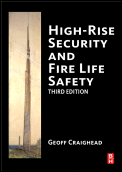5-Minute Tech Quiz
Fire Alarm Calculations

Exercise Your Knowledge of Fire Alarm Calculations
All Answers relate to NFPA 101, 2018 Edition
1. The table indicates this is a remote station system. What would be the required standby and alarm time?
A. 24 hours and 5 minutes
B. 60 hours and 4 minutes
C. 24 hours and 15 minutes
D. 24 hours and 4 minutes
2. If the system type indicated was a household system, what would be the required standby and alarm time?
A. 24 hours and 5 minutes
B. 60 hours and 4 minutes
C. 24 hours and 15 minutes
D. 24 hours and 4 minutes
3. The alarm panel manufacturer states that the maximum output current during an alarm is 400 milliamps. Would the power necessary during an alarm be sufficient or would it cause an overload?
A. Sufficient because the standby and combined alarm current is less than 400 milliamps.
B. Insufficient because the alarm current exceeds 400 milliamps.
C. Sufficient because the alarm time is only 4 minutes and the panel is using a 7 amp hour battery.
D. Not enough information has been provided.
4. A combination household fire and burglar alarm system requires no battery calculations because the manufacturer has already set out the appropriate parameters.
A. True
B. False
5. For a household fire and carbon monoxide alarm system, the secondary standby power shall be capable of operating the system for at least _______________.
A. 24 hours in the normal condition, followed by 5 minutes of fire alarm and 12 hours of carbon monoxide alarm
B. 24 hours in the normal condition, followed by 4 minutes of fire alarm or 4 hours of carbon monoxide alarm
C.12 hours in the normal condition, followed by 15 minutes of fire alarm or 1 hour of carbon monoxide alarm
D. 24 hours in the normal condition, followed by 4 minutes of fire alarm or 12 hours of carbon monoxide alarm
NFPA 72, 2019, 29.9.3
6. The required standby capacity (AMP-Hours) required is ________.
A. 6.7
B. 13.75
C. 4
D. 11.10
7. The required standby battery that must be installed is ___________ amp hours.
A. 4
B. 7
C. 12
D. 17
E. 35
8. A rechargeable battery used as the secondary power source shall be recharged within _____________ hours.
A. 4
B. 12
C. 24
D. 48
NFPA 72, 2019, 29.9.3(4)(b)
9. For a remote system, the required alarm time is 5 minutes, which converts to __________ hours.
A. 0.067
B. 0.083
C. 0.167
D. 0.250
10. The total alarm current draw (B) is ___________.
A. 0.635 amps
B. 0.889 amps
C. 1.3 amps
D. 340 milliamps
Can you Identify This?
Using the information provide in the table below, calculate the required alarm and standby current for A through P to answer the questions that follow.
Click here to see the answer.
Answer to: Identify This

Looking for a reprint of this article?
From high-res PDFs to custom plaques, order your copy today!








